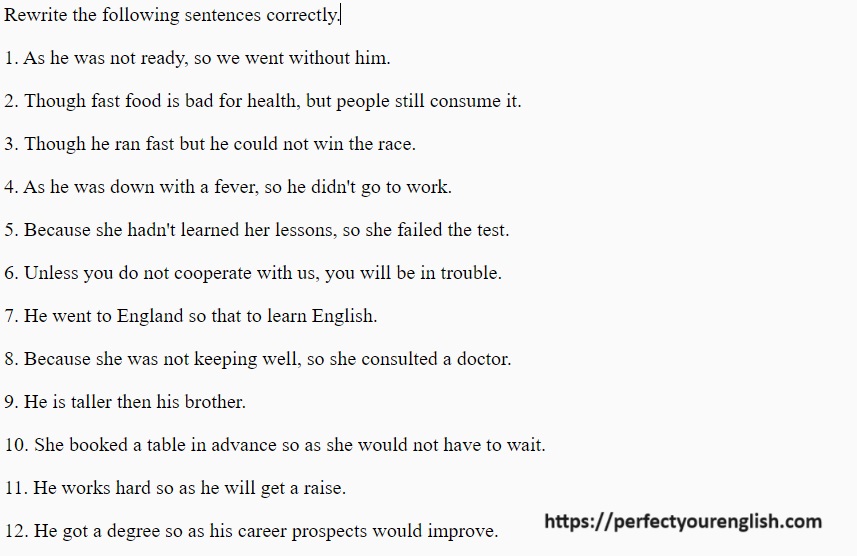Common Errors With Conjunctions
Conjunctions are connecting words. They connect clauses together. Note that we use just one conjunction to connect two clauses. Conjunctions are not used correctly in the following sentences. Rewrite them.
Before doing this exercise, you may want to review this lesson about common errors with conjunctions.

Answers
1. As he was not ready, we went without him. / He was not ready, so we went without him.
2. Though fast food is bad for health, people still consume it. / Fast food is bad for health but people still consume it.
3. Though he ran fast he could not win the race. / He ran fast but he could not win the race.
4. As he was down with a fever, he didn’t go to work. / He was down with a fever so he didn’t go to work.
5. Because she hadn’t learned her lessons, she failed the test. / She hadn’t learned her lessons, so she failed the test.
6. If you do not cooperate with us, you will be in trouble. / Unless you cooperate with us, you will be in trouble.
7. He went to England so as to learn English.
8. Because she was not keeping well, she consulted a doctor. / She was not keeping well, so she consulted a doctor.
9. He is taller than his brother.
10. She booked a table in advance so that she would not have to wait.
11. He works hard so that he may get a raise.
12. He got a degree so that his career prospects would improve.